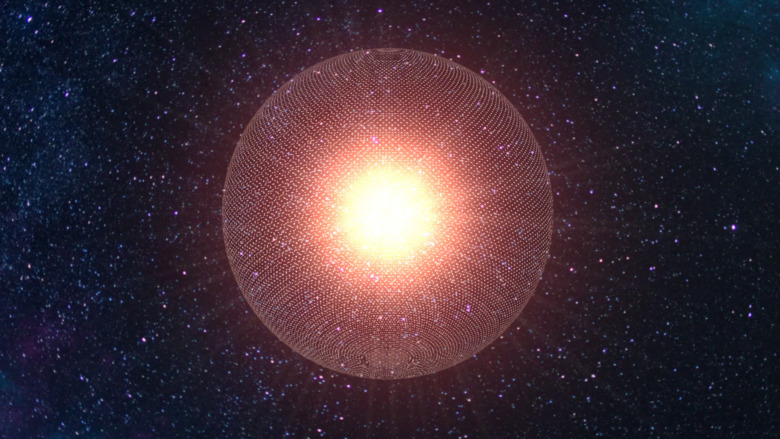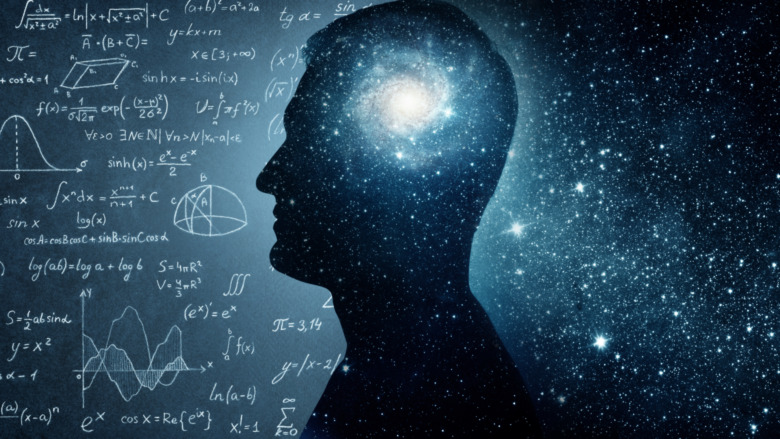Could A Solar Megastructure Unlock Human Immortality?
Star Trek: The Next Generation, season 6, episode 4, "Relics," featured our beloved Scottish engineer "Scotty" from the original series brought back from the dead and facing obsolescence in a more advanced age. At least, he was stuck in a transporter buffer for years, presumed dead, while the world moved on without him. In Scottie's case, his antiquated knowledge, along with Geordi LaForge's technical know-how, proved just what the crew of the Enterprise needed to escape from the interior of a massive, incalculably ancient, star-encompassing Dyson Sphere.
And that's exactly what a Dyson Sphere is supposed to be: a solar megastructure so huge that it's built around an entire star. And in the aforementioned Star Trek episode, its benefits are exactly what its imagineer, physicist and mathematician Freeman Dyson envisioned them to be: nigh-limitless energy for a civilization advanced enough to have the resources, materials, and technology to construct it. Strictly speaking, using the Kardashev scale — developed in 1964 by Russian astrophysicist Nikolai Kardashev to describe the development of human civilization — this could be accomplished by a "Type II civilization" which has harnessed all available planetary energy, but is not yet truly spacefaring, as Futurism explains.
Freeman Dyson, who died in 2020, chiefly meant his Dyson Sphere to be a thought experiment. It has, however, gone on to inspire not only science fiction, but actual science, particularly robotics. Not only is it possible, some say, but it could hold the key to human immortality.
Transhumanists envision four methods of immortality
Freeman Dyson imagined the Dyson Sphere largely as a way to search for intelligent life on other planets, as The Guardian tells us. Super-advanced civilizations, he reasoned, especially spacefaring ones, would likely have access to energy reserves far beyond our own. And if their sun was dim, then it might be surrounded by a structure that harnessed its energy. But how could we even see the light from their sun if it was encased in an artificial structure? As Popular Mechanics explains, a Dyson Sphere really wouldn't be an enclosure. It would, realistically, be a swarm of robotically-placed mirrors or solar panels "the thickness of tin foil" that would utilize our sun as a kind of giant solar thermal battery.
This is where Russian "life extensionist" and transhumanist (one who believes in transcending the current, organic definition of "human") Alexey Turchin comes into play, per CBR. Ever since Turchin lost a friend at age 11 he's been wholly preoccupied with human immortality. He and fellow transhumanist Maxim Chernyakov have outlined four possible routes to human immortality, viewable on Nerdist, given current conditions and barring unforeseen circumstances that make such speculation invalid.
We've got Plan A — life extension through biological means and cyborgization; Plan B — good ole' cryogenics, featured in many a sci-fi show; Plan D – we are already immortal, on a quantum level, through a consciousness simulation, and so forth; and the biggie: Plan C — digitally copying ourselves using a superpowered AI.
Digitally copied and pasted using the energy of a 'Dyson Swarm'
This is where the Dyson Sphere comes into play. Essentially, it's the only structure available, theoretical or otherwise, that could generate enough energy to operate an AI (artificial intelligence) capable of storing and calculating the entirety of what makes you you.
For instance, you know how bitcoins can be digitally "mined" only by increasing the energy output responsible for their creation? (That's how it works, in case you were wondering — check out Think Geoenergy.) That's just for a string of data. How about the 86 billion neurons in one human mind, as cited by Nature Education? Multiplied by all living people, or all people who will live by the time a Dyson Sphere (or Swarm) can be built? But such data isn't limited to sheer cellular figures, either. It would, as Turchin says in Popular Mechanics, require "ubiquitous surveillance" by an AI. Take this data, plus a sample of your DNA, and presto: grow a new you. A Dyson Sphere is the only structure capable of generating enough energy to perform such functions.
There's a problem, of course, exactly the same as the matter-to-energy conversion transporters of Star Trek (especially if you believe in an immortal, indivisible soul): would the new you be you? At the very least, from the point it's copied, it could choose for itself. Let's just hope it doesn't feel as obsolete as Scotty did in "Relics."


